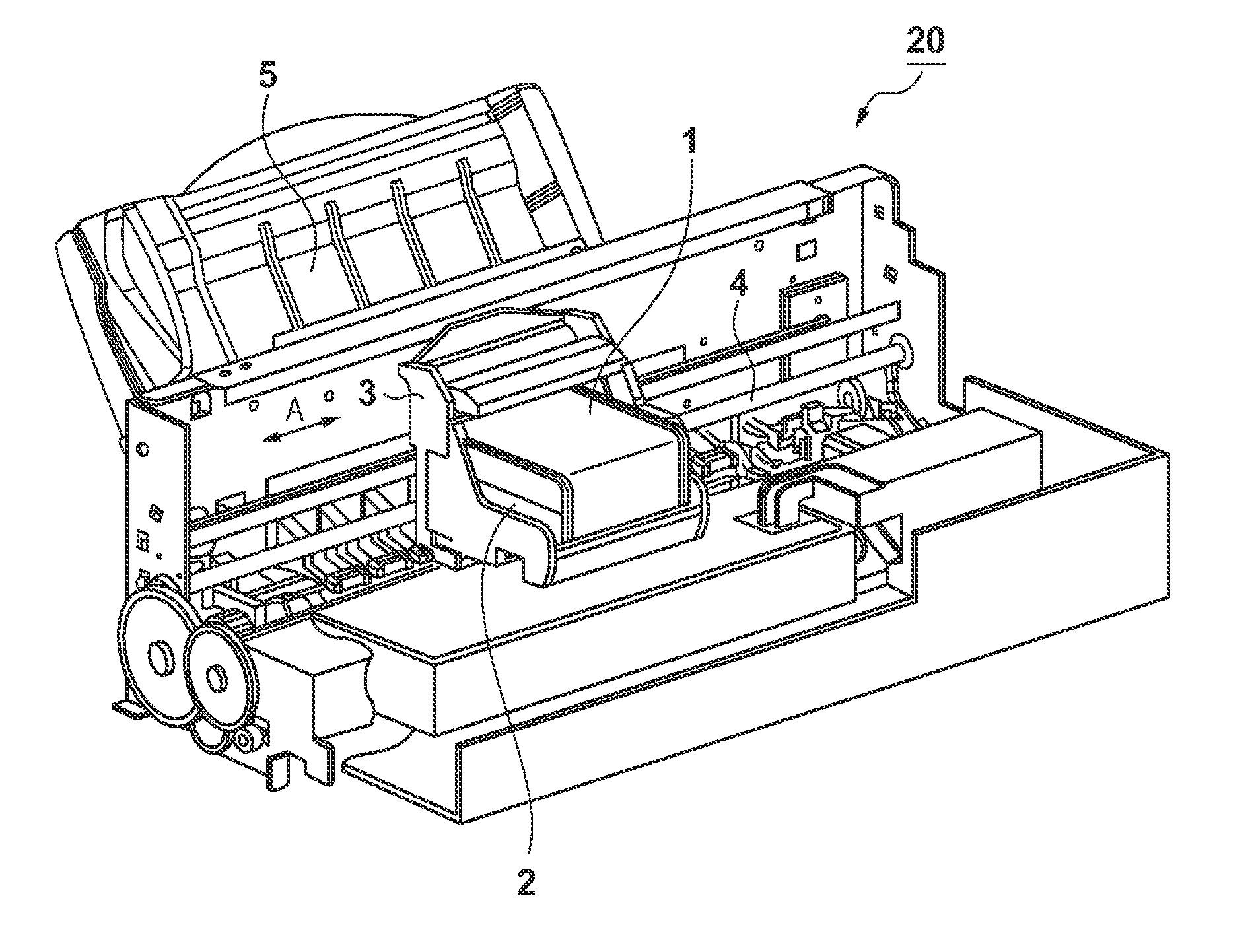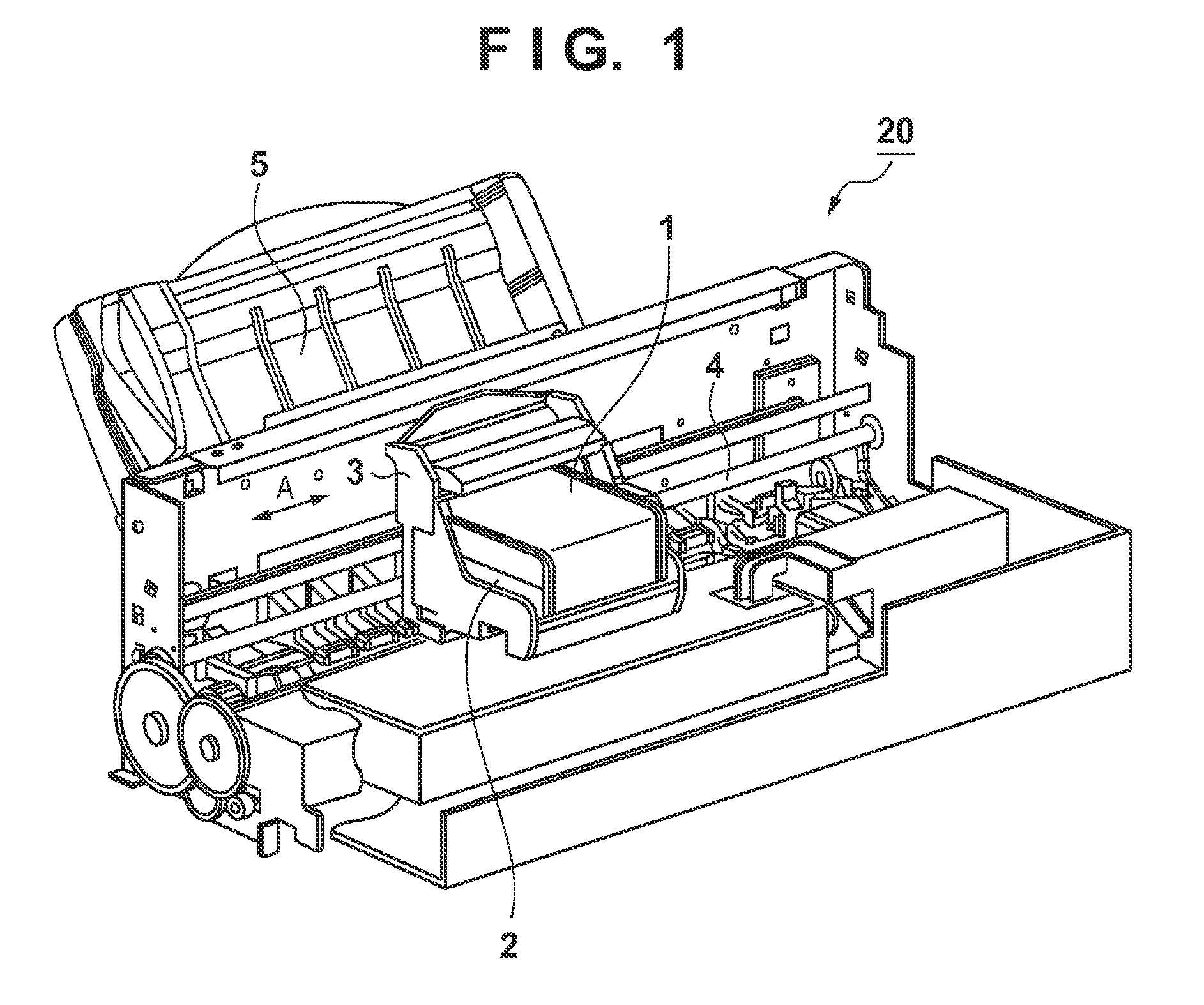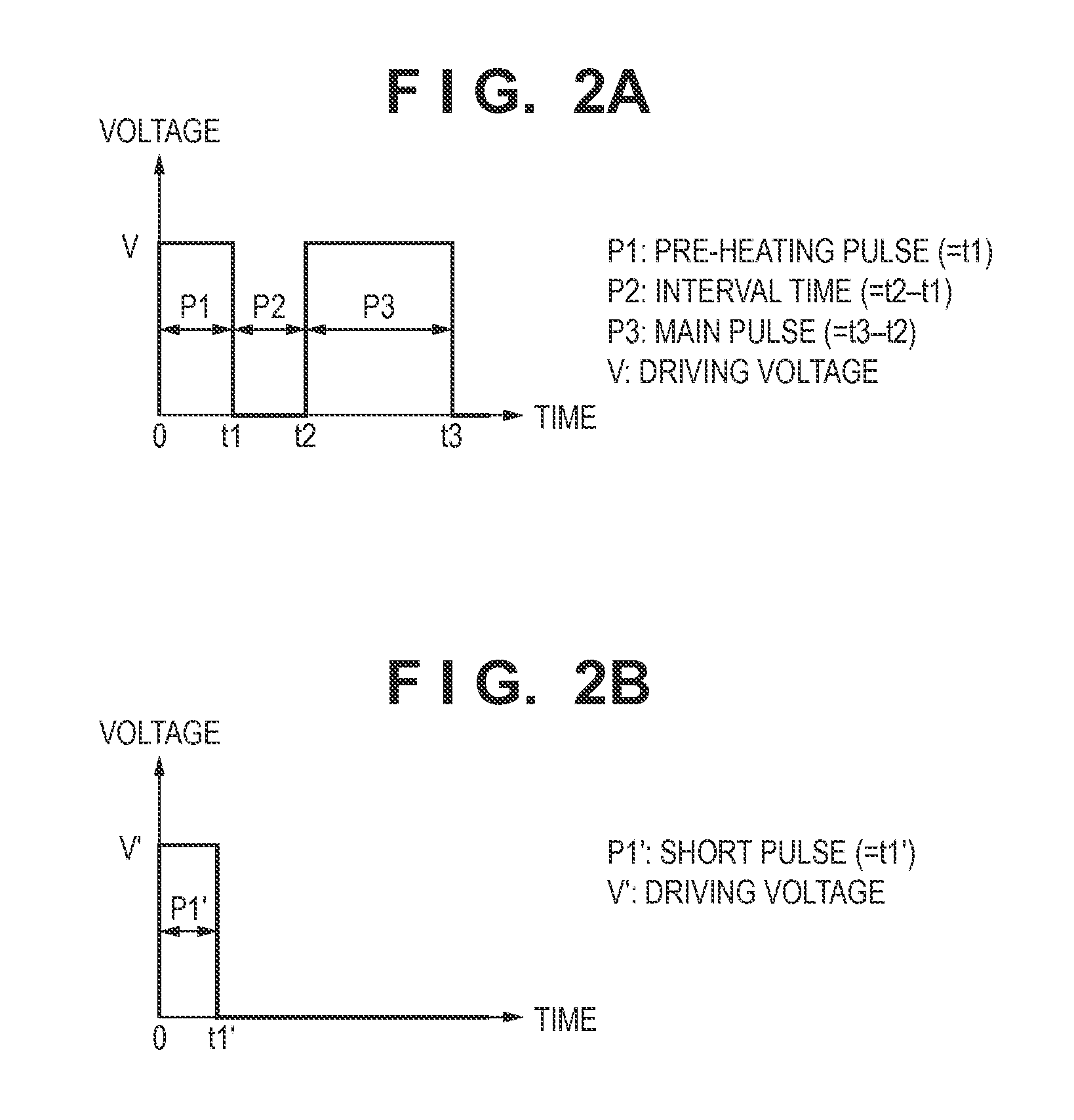Printing apparatus and control method for the same
- Summary
- Abstract
- Description
- Claims
- Application Information
AI Technical Summary
Benefits of technology
Problems solved by technology
Method used
Image
Examples
embodiment 1
[0043]FIG. 1 is a perspective view of an example of the configuration of an inkjet printing apparatus (hereinafter, simply referred to as a “printing apparatus”) according to an embodiment of the present invention.
[0044]In a printing apparatus 20, an inkjet printhead (hereinafter, simply referred to as a “printhead”) 2 for performing printing by discharging ink in accordance with an inkjet system is mounted in a carriage 3, and printing is performed by moving the carriage 3 back and forth in the arrow A direction (main-scanning direction) along a guide rail 4. In the printing apparatus 20, a printing medium is fed via a paper feed tray 5 and conveyed in a direction that is orthogonal to the arrow A (that is, in the sub-scanning direction). Ink is then discharged from the printhead 2 onto the printing medium at a print position that opposes the orifice surface of the printhead 2, and thus printing is performed. Here, when the carriage 3 has moved from one end of the printing medium t...
embodiment 2
[0094]Next is a description of Embodiment 2. Embodiment 2 describes the case of using a printhead 2 (heater board 6) that employs a different base plate 13 from that of Embodiment 1. Other aspects of the configuration will not be described since they are the same as in Embodiment 1.
[0095]FIG. 10A shows an example of the shape of the base plate 13 of Embodiment 2. FIG. 10B is a perspective view of part of the base plate 13. Arrow L corresponds to the longitudinal direction of the heater board 6. The base plate 13 of the present embodiment differs from the base plate 13 that is shown in FIG. 4C and described in Embodiment 1 in that two cross beams 14 made of the same material are provided extending in the lateral direction of the heater board 6 (the direction orthogonal to the orifice arrangement direction) in the vicinity of the center of the orifice array. In the case where the heater board 6 is long (approximately 1 inch) in the longitudinal direction, it can be anticipated that he...
embodiment 3
[0104]Next is a description of Embodiment 3. Embodiment 3 describes the case of switching the order of execution of the first temperature adjusting operation and the second temperature adjusting operation described in Embodiments 1 and 2. The configuration, various setting values, and the like of the printing apparatus 20 will not be described below since they are the same as those in Embodiment 1, and the following description will focus on differences from Embodiment 1.
[0105]The following describes the orifice array temperature distribution obtained after two-stage temperature adjusting processing of Embodiment 3 has been carried out, with reference to FIG. 12A. In order to describe an effect of the present embodiment, FIG. 12B shows a conventional temperature distribution as a reference example. Note that N1, N2, D1, and D2 in FIG. 12A respectively correspond to the same reference signs shown in FIG. 3B.
[0106]Similarly to Embodiment 1, a flatness rate was calculated, and the flat...
PUM
 Login to View More
Login to View More Abstract
Description
Claims
Application Information
 Login to View More
Login to View More - R&D
- Intellectual Property
- Life Sciences
- Materials
- Tech Scout
- Unparalleled Data Quality
- Higher Quality Content
- 60% Fewer Hallucinations
Browse by: Latest US Patents, China's latest patents, Technical Efficacy Thesaurus, Application Domain, Technology Topic, Popular Technical Reports.
© 2025 PatSnap. All rights reserved.Legal|Privacy policy|Modern Slavery Act Transparency Statement|Sitemap|About US| Contact US: help@patsnap.com



